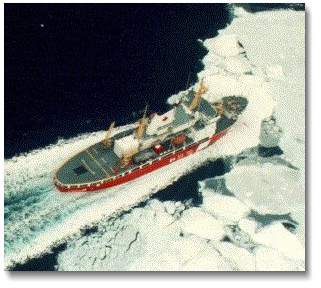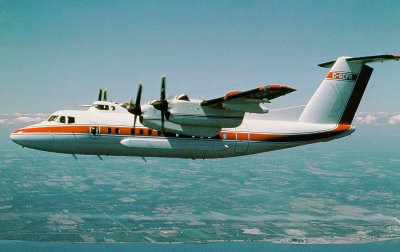

 
|
|
|
|
|
||
|
|

The Science of Ice
Each year, Canada's freshwater and saltwater pack ice advances and recedes over an area half the size of the country's land mass. Where it is, how long it will be there and important characteristics such as thickness and concentration are critical information to many industries that rely on marine transportation. The Canadian Ice Service of Environment Canada collects accurate and up-to-date information on ice conditions in all regions of the country affected by this cycle through a network of satellites, airborne radar and visual observations in the summer, efforts focus on the Arctic and Hudson Bay regions; in the winter and spring, they turn to the Labrador Coast and east Newfoundland waters, the Gulf of St. Lawrence, the Great Lakes and the St. Lawrence Seaway. Using sophisticated computer models and a trained eye, analysts transform this information into a variety of products--a process that takes only two hours from the time a satellite observation is received. These products are varied: satellite and radar images; bulletins warning of ice hazards and icebergs; detailed analysis charts describing ice type, pressure, thickness and concentration; and forecasts that project ice formation, drift, and breakup. At its peak, the Canadian Ice Service makes nearly 12,000 deliveries a month to clients that include the Canadian Coast Guard, National Defence, port authorities, and the shipping, fishing, marine insurance, offshore resource development and tourism industries. Ice Service personnel also maintain historic climatological data on ice and iceberg patterns, and help guide ships through dense pack ice. 
Ice observations have changed significantly since they were launched during the Second World War to extend the shipping season on the St. Lawrence River. For nearly four decades, data were collected solely through human observations--a task that required hundreds of hours of flying time and did not yield the amount of data that can be gathered with today's technology. Remote sensing expanded the scope of these observations with the operational use of the side looking airborne radar (SLAR) in 1978 and the synthetic aperture radar (SAR) in 1990, both of which have a range of hundreds of kilometres. 
The most recent advance came about in 1996, when a SAR was mounted on Canada's RADARSAT. The Ice Service is now the world's heaviest user of real-time data from the satellite. Using the polar orbiting satellite enables the Service to collect 15 times more data than it could by plane for a third the cost, visiting sites in the north on a daily basis and elsewhere in Canada once every three days. It scans a swath 500 kilometres wide and transmits some 3,500 satellite images to the Ice Service each year. Additional data are provided by European and American satellites. Click to enlarge The success of a recent effort to track oil spills using satellite imagery has Ice Service scientists hopeful that, in the future, data collected for ice observations could also be used to detect other potentially hazardous phenomena--particularly those requiring an immediate response. |
|
|
Home | Air | Atmospheric Science | Climate Change | Environmemental Action | Habitat | Pollution | Species at Risk | Technology | Water | Weather | Wildlife |
|
|
| Help
| Search
| Canada Site |
|
||
|
The Green LaneTM, Environment Canada's World Wide Web site
|
||
|
|
||
|
|
||